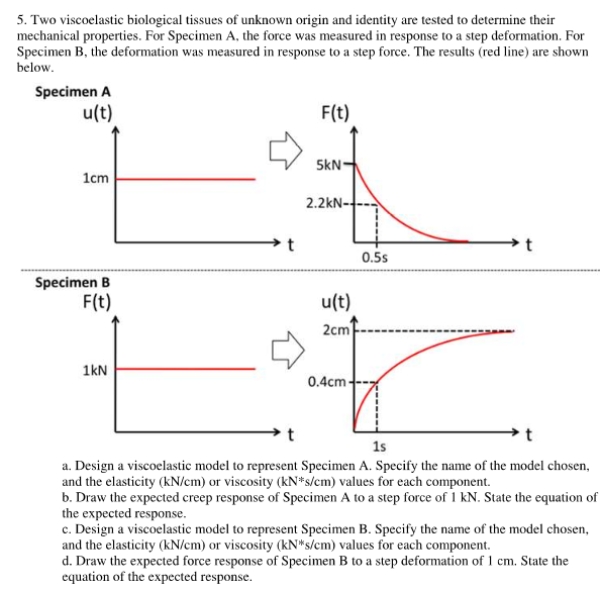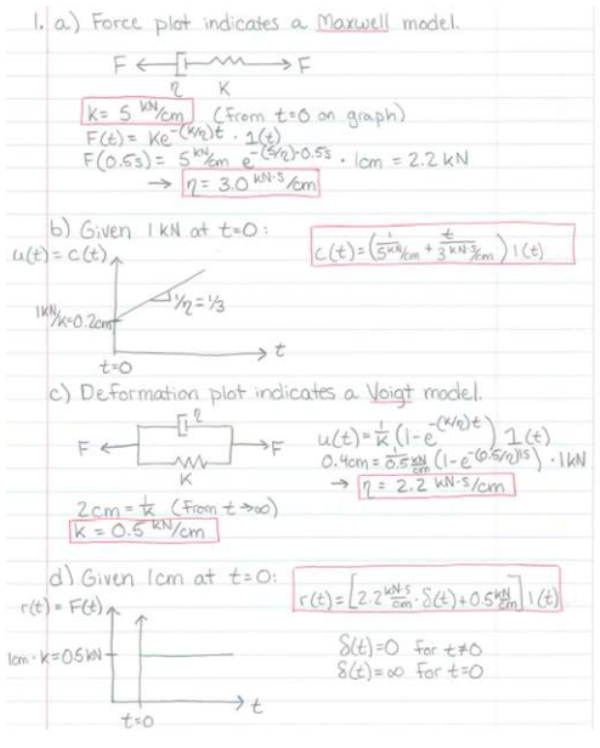Two viscoelastic biological tissues of unknown origin and identity are tested to determine their mechanical properties. For specimen A, the force was measured in reponse to a step deformation. for specimen B, the deformation was measured in response to a step force. The results (red line) are shown below. a) Design a viscoelastic model to represnt Specimen A. Specify the name of the model chosen, and the elasticity or viscosity values for each component. b) Draw the expected creep response of specimen A to a step force of 1 kN. State the equation of the expected response. c) Design a viscoelastic model to represent specimen B. Specify the name of the model chosen, and the elasticity or viscosity values for each component. d) Draw the expected force reponse of specimen B to a step deformation of 1 cm. State the equation of the expected response.
Highalphabet Home Page biomechanics biomechanics biomechaincs Page 1


Two viscoelastic biological tissues of unknown origin and identity are tested to determine their mechanical properties. For specimen A, the force was measured in reponse to a step deformation. for specimen B, the deformation was measured in response to a step force. The results (red line) are shown below. a) Design a viscoelastic model to represnt Specimen A. Specify the name of the model chosen, and the elasticity or viscosity values for each component. b) Draw the expected creep response of specimen A to a step force of 1 kN. State the equation of the expected response. c) Design a viscoelastic model to represent specimen B. Specify the name of the model chosen, and the elasticity or viscosity values for each component. d) Draw the expected force reponse of specimen B to a step deformation of 1 cm. State the equation of the expected response.
biomechanics page 1 biomechanics biomechanics biomechanics biomechanics biomechanics biomechanics biomechanics biomechanics page 2